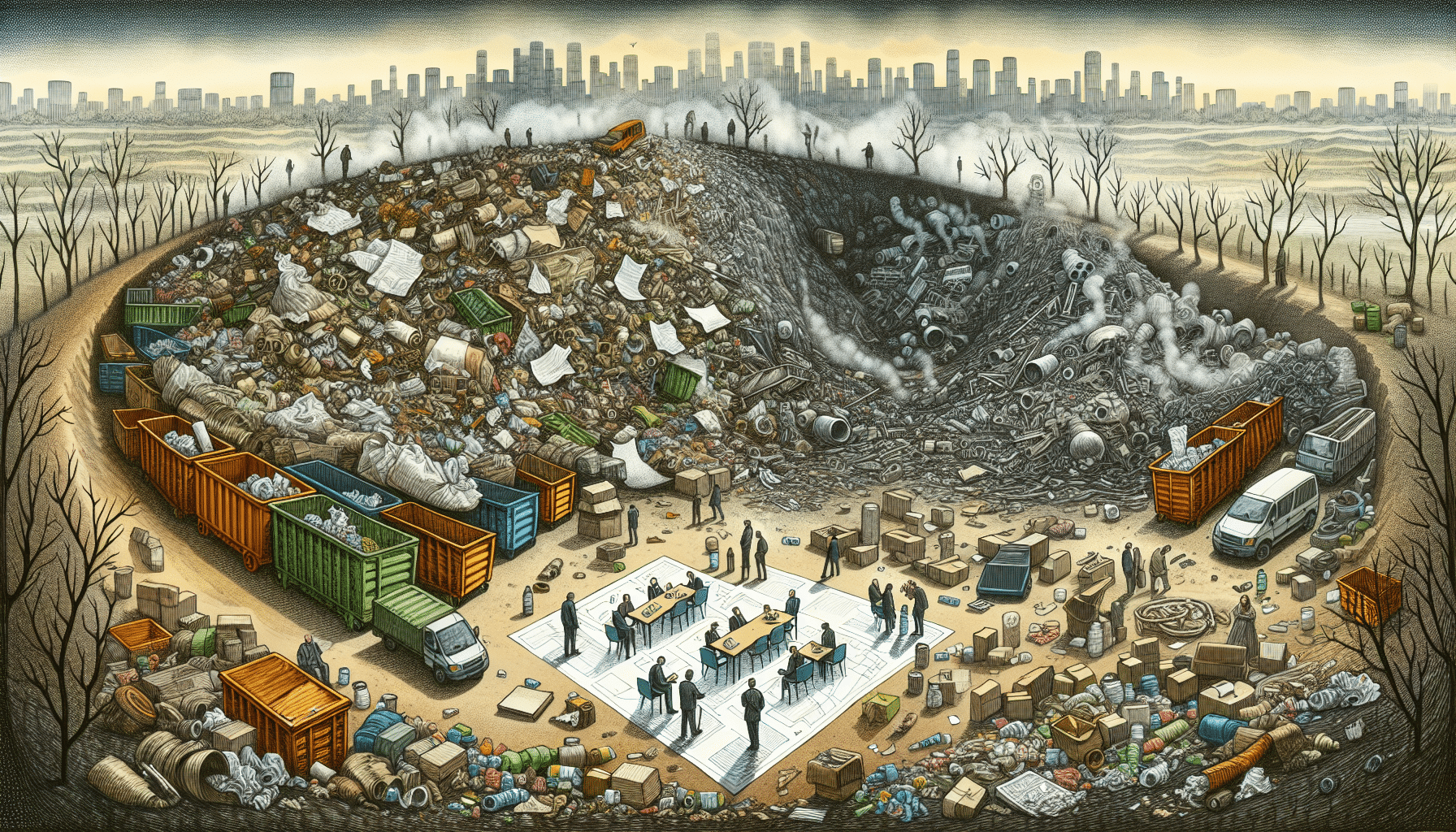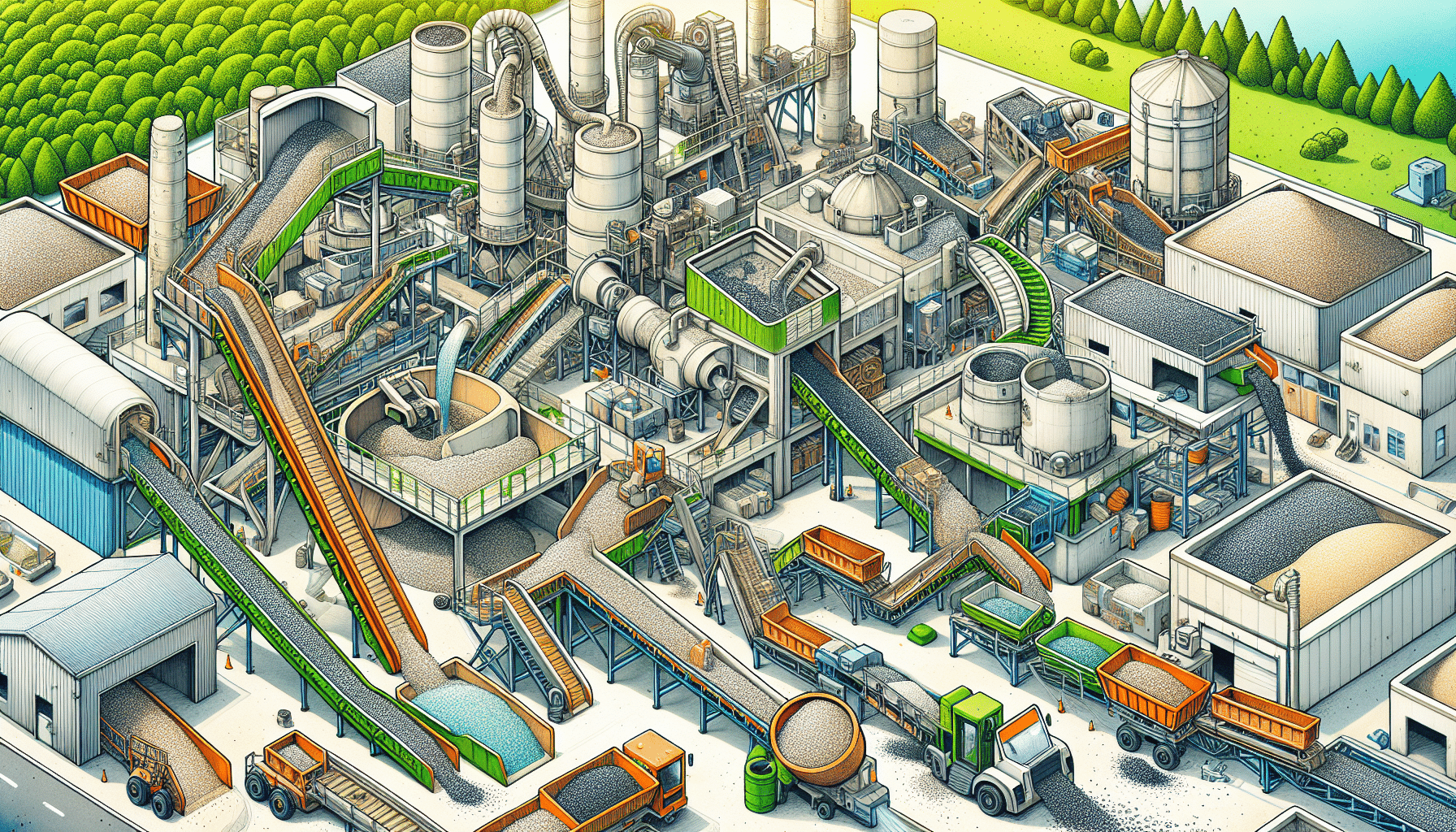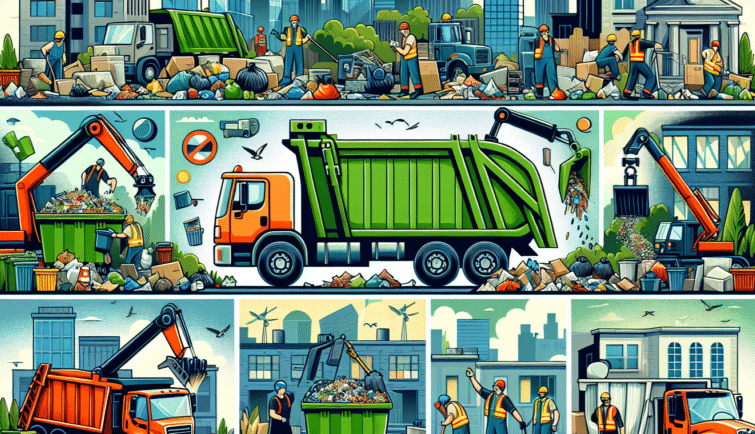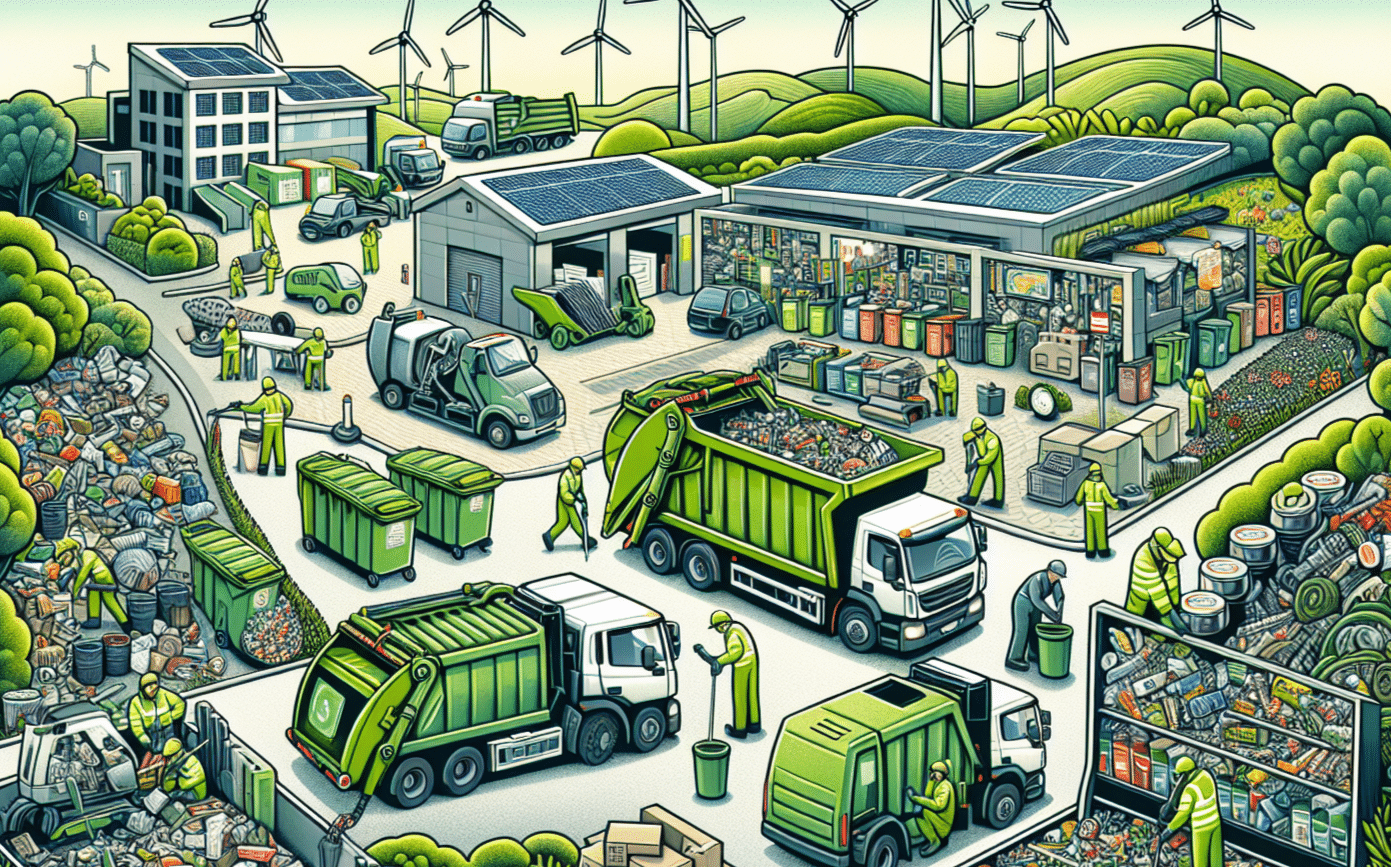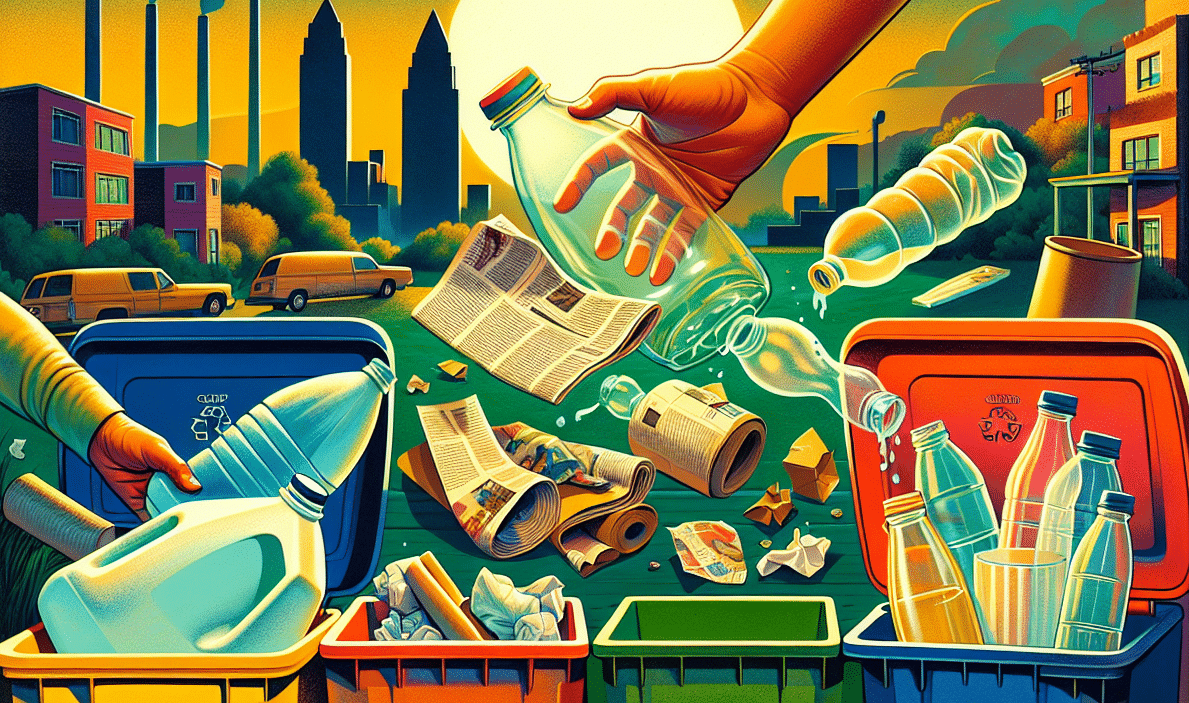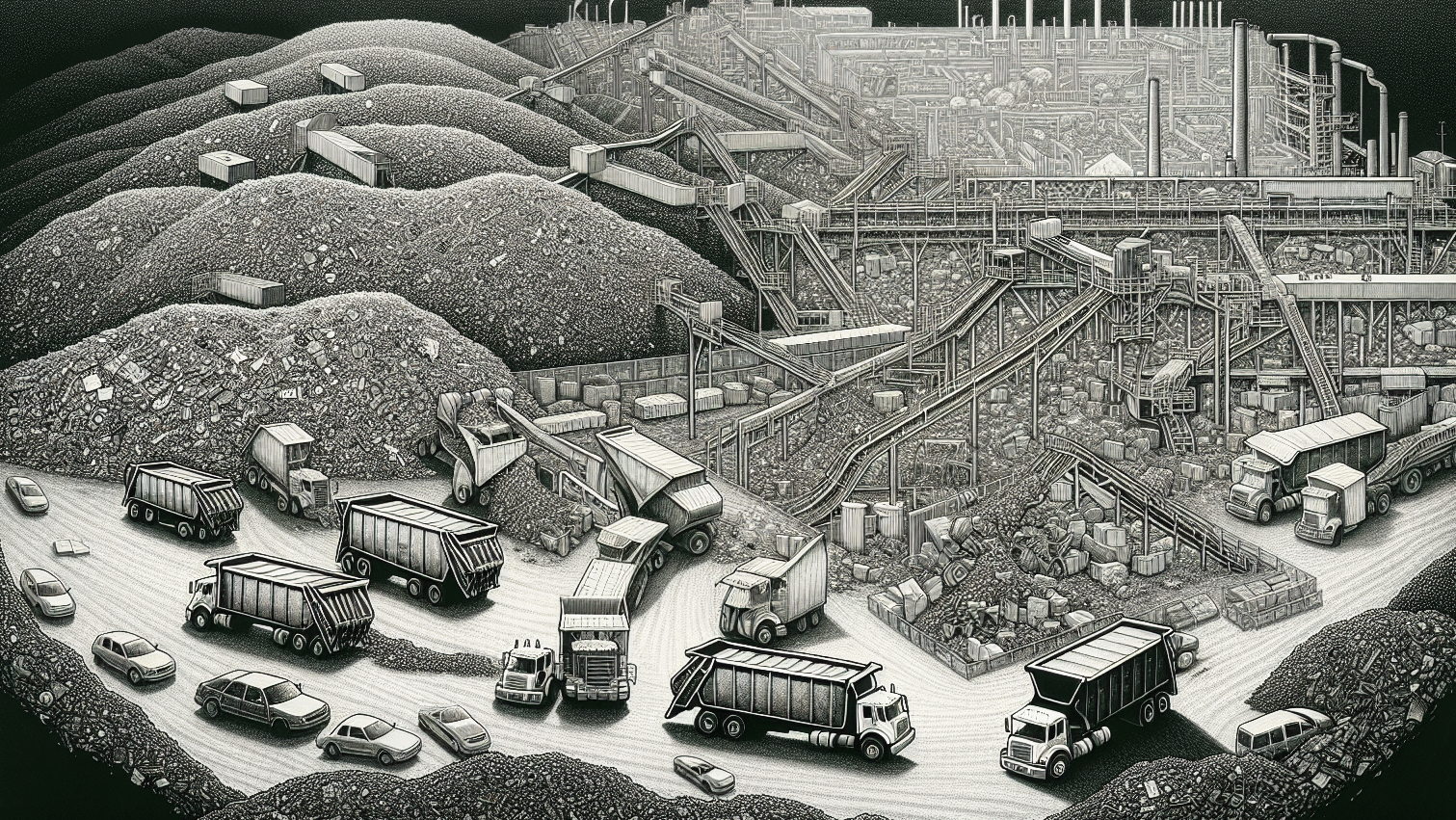What are recycling costs, and do its benefits outweigh them? This article investigates the true economic, environmental, and societal costs of recycling, offering comparative insights with landfill disposal, with a clear eye on whether the investments in recycling are paying off for our communities and planet.
Key Takeaways
- While environmentally beneficial, recycling is financially more costly than landfilling due to its complexity, market fluctuations, and the expenses associated with curbside collection, processing at MRFs, and contamination issues.
- The cost-effectiveness of recycling varies depending on the material, with aluminum and other metals being more profitable to recycle due to energy savings and market demand. At the same time, plastics pose a challenge due to lower scrap values and significant quality degradation.
- Innovative waste management approaches, such as Extended Producer Responsibility and upcycling, alongside educational and technological advancements, are crucial for improving recycling efficiency and reducing financial and environmental costs.
Unpacking the Price Tag of Recycling

Recycling is a complex journey, and every stage incurs a cost. From the curbside collection to the final stage of marketing recycled materials, each step is more intricate and laborious than simply disposing of waste in a landfill. This complexity is further compounded by global market changes, like international policy restrictions on recyclables and market fluctuations, which often escalate the costs of recycling programs.
Recycling can often be a significant financial undertaking. For instance, cities like San Jose, California, experience costs of $147 per ton for recycling compared to a mere $28 per ton for landfilling. However, these costs could potentially be reduced with improved communication between manufacturers and the recycling industry, leading to more optimized management of recyclables.
The Economics Behind Curbside Recycling Programs
Curbside recycling programs, widespread in many neighborhoods, bring unique economic considerations. The expenses involved in maintaining these programs include:
- Specialized trucks
- Additional personnel
- Driver salaries
- Regular maintenance
- Fuel consumption
- Insurance coverage
These factors add to the increased recycling costs of recycling programs compared to traditional waste collection.
However, the expenses extend beyond that. Beyond the operation of trucks, curbside recycling programs require a larger workforce for collecting, transporting, and sorting recyclable materials. This further expands the labor costs associated with recycling.
Processing Challenges at Materials Recovery Facilities
Materials Recovery Facilities (MRFs), the destination for your recyclables for sorting and processing, demand significant upkeep, energy, and workforce, all adding to the expense. The recycling process necessitates specialized equipment and infrastructure, which are significant investments that contribute to recycling programs’ overall costs.
Contamination presents a significant hurdle for MRFs. In single-stream recycling, contamination levels can be as high as 25%. This significantly diminishes recycling efforts’ profitability and increases processing costs.
Market Dynamics Affecting Recyclable Material Prices
International policies greatly influence the ever-changing global recycling market. For instance, China’s National Sword policy has led to soaring recycling costs in the U.S., posing financial challenges for many U.S. cities and towns struggling to support their recycling programs. This policy has caused a dramatic drop in the total market value for curbside recycling materials in the U.S., falling from $5.3 billion in spring 2017 to $2.7 billion in November 2019.
Furthermore, these international market restrictions and the overall low market value of recyclables often lead to recycling programs being perceived as too costly compared to simply disposing of waste. This perception poses sustainability challenges for the recycling industry.
The Cost-Effectiveness of Recycling Various Materials
While recycling involves numerous costs, it’s important to remember that the cost-effectiveness varies across different materials. Some materials, such as aluminum, can be extremely cost-effective to recycle. Recycling aluminum can save around 95% of the energy required to make new aluminum from ore and can be recycled indefinitely without degrading.
Moreover, manufacturing new products from recycled materials generally requires less energy than producing them from virgin materials. This fact further emphasizes recycling’s cost-effectiveness. Additionally, recycling also contributes economically by creating job opportunities. For instance, recycling one ton of paper can result in three to five jobs.
Analyzing the Recycling of Plastics

However, the narrative for plastic is distinct. Currently, recycling plastic is not cost-effective due to lower scrap values and higher recycling costs compared to producing new plastics, especially when low oil prices make new plastic production cheaper. The quality of recycled plastics also diminishes with each recycling cycle, with even the most recyclable plastics only capable of being processed two to three times before the quality degrades too much for use.
Nonetheless, there is a silver lining. Manufacturers’ demand for recycled plastics is increasing, which could shift the economic balance, potentially making recycling plastic more cost-effective in the future. Investments in improved recycling technologies for better sorting and processing of recyclables might also lead to enhanced environmental benefits and a reduction in greenhouse gas emissions.
The Profitability of Recycling Metals and Glass
Conversely, recycling metals and glass yields more profit. Take aluminum, for example. Recycling aluminum avoids 95% of the energy costs required for primary production, making it significantly more energy-efficient. Steel, too, is a cost-effective material to recycle due to its complete recyclability, efficient processing, and high demand exceeding supply.
Glass can be recycled indefinitely without quality degradation, although the U.S. is currently less efficient than European systems. The energy savings and high demand make recycling metals and glass more profitable, providing some balance to the overall cost of recycling programs.
Environmental Costs vs. Economic Costs: Striking a Balance
Balancing environmental and economic costs poses a formidable challenge. Nevertheless, residential recycling results in significant environmental benefits, including reducing greenhouse gas emissions and preserving virgin natural resources. Household waste management that includes recycling and disposal can reduce the average annual greenhouse gas emissions footprint by up to 0.24 t CO2eq per household yearly.
However, recycling can produce emissions and pollution, such as those from recycling trucks and potential contaminants from recycling facilities. Therefore, the balance between environmental and economic costs must be carefully considered and managed.
The Impact of Recycling on Natural Resource Conservation
Recycling significantly contributes to preserving natural resources. Here are some ways recycling helps conserve finite natural resources:
- Suppresses the demand for new raw materials, such as timber, water, and minerals
- Extends the life cycle of resources through recycling programs
- Bolsters the conservation of biotic and abiotic resources
- Decreases water usage
- Offsets nutrient loading and toxic emissions
By recycling, we can positively impact the environment, help preserve our natural resources, and reduce our reliance on fossil fuels.
A tangible benefit of recycling efforts is seen in the paper industry. Recycling a single ton of paper can save approximately seventeen trees, underlining the significant conservation potential of recycling.
Weighing Landfill Gas Emissions Against Recycling Program Costs
Although recycling mitigates greenhouse gas emissions and their economic impacts linked to climate change, the process generates emissions. These emissions occur during:
- Waste collection
- Sorting facility processing
- Remanufacturing
- Disposal via landfilling and combustion
However, in 2018, recycling and composting municipal solid waste in the US resulted in over 193 million metric tons of carbon dioxide equivalent reduction. This significant reduction in emissions illustrates the potential of recycling to contribute positively to our environment, despite the associated costs.
Rethinking Recycling: Innovative Approaches to Manage Waste
Given the intricate costs and environmental factors, reconsidering and restructuring recycling is essential. Innovative approaches are emerging, such as Zero Waste systems, including Extended Producer Responsibility for Packaging and Bottle Bills, designed to increase recycling rates, reduce trash, and alleviate financial pressure from municipalities.
In addition to these policy approaches, upcycling helps businesses cut procurement, disposal, and production costs while aiding in sustainability efforts by minimizing waste and carbon footprint. These innovative approaches are thus crucial to managing waste effectively and efficiently.
Extended Producer Responsibility: Shifting the Financial Burden
Extended Producer Responsibility (EPR) represents one of these innovative strategies. EPR is a policy approach that designates producers as responsible for the end-of-life management of their products, thereby shifting the financial burden away from municipal waste management systems. Well-designed deposit return schemes, such as those under EPR programs, correlate with higher recycling rates and reduced unrecycled plastic bottles and cans.
Municipalities are also expected to benefit economically from EPR-related initiatives. For instance, in the UK, projections indicate annual savings of £86 million for councils due to reduced litter due to introducing a deposit return scheme. Therefore, EPR presents a promising approach to relieving the financial burden of recycling programs.
Enhancing Recycling Rates Through Education and Technology
Beyond policy alterations, enhancing recycling rates and curbing contamination requires a blend of consumer education and technological progress in recycling. Educational initiatives aimed at consumers can raise recycling rates by distributing informational materials and leveraging technology and digital platforms to engage individuals in recycling practices.
Contamination in recycling can lead to system shutdowns for removal, which slows processing and increases costs due to reduced efficiency. About 20% of the material in many curbside recycling programs is deemed contaminated, which can bog down sorting systems. Therefore, merging consumer education with technological improvements can mitigate the problem of contamination, leading to more efficient recycling systems.
The Role of the US Environmental Protection Agency and Other Organizations
Organizations like the US Environmental Protection Agency are instrumental in advancing recycling. The EPA’s National Recycling Strategy is a prime example, aiming to create a stronger and more cost-effective U.S. municipal solid waste recycling system. This strategy focuses on strengthening the recycling system through strategic objectives and actions.
Further, the EPA’s Landfill Methane Outreach Program has successfully reduced methane emissions from landfills by 60 to 90%. In an effort to improve community health and resilience, the Bipartisan Infrastructure Law provides funding to support state and local waste management infrastructure and recycling programs. These efforts by the EPA and other organizations are vital in strengthening and supporting recycling programs nationwide.
Local Case Studies: New York and Beyond
Locally, recycling initiatives also yield considerable benefits. In New York, the bottle recycling program, established in 1983, has been seen by most New Yorkers as contributing positively to the state. The program mandates that retailers selling beverages with deposits must take back the containers for recycling and reimburse the deposits. At the same time, the state gets to support public projects with funds from unredeemed deposits. Some of the benefits of the program include:
- Reducing waste and landfill space
- Conserving natural resources
- Saving energy and reducing greenhouse gas emissions
- Creating jobs in the recycling industry
- Promoting a culture of sustainability
These are just a few examples of the positive impact that recycling initiatives can have on a local level.
These local case studies provide practical examples of how recycling initiatives can positively impact a state and its residents, demonstrating the potential benefits of comprehensive and well-managed recycling programs.
Recycling Worth Revisited: Measuring Success Beyond Dollars
Recycling’s value extends beyond mere monetary metrics. Advocates argue that practices such as source reduction and reusing materials offer more sustainability and economic efficiency than current recycling and landfilling processes. We can optimize environmental impact and taxpayer dollars by reducing the amount of waste generated in the first place and reusing materials where possible.
Proposed zero-waste legislation aims to:
- Mitigate the escalating costs linked to recycling
- Reduce environmental impact
- Optimize the use of taxpayer dollars
- Provide a broader perspective on the worth of recycling.
Summary
In conclusion, recycling is a complex process with multifaceted costs and benefits. While it can be more expensive than landfilling waste, the environmental benefits and potential for resource conservation make it a crucial component of sustainable waste management. Moreover, innovative practices, such as Extended Producer Responsibility and consumer education, offer promising avenues for enhancing recycling rates and managing waste more efficiently. Despite the challenges, the value of recycling goes beyond dollars, contributing to a sustainable and resource-efficient future.
Frequently Asked Questions
Why is recycling more expensive than landfilling waste?
Recycling is more expensive than landfilling waste because it involves multiple costly stages, such as collection, processing, sorting, and marketing. On the other hand, landfilling waste involves fewer steps and lower costs.
Is recycling all materials cost-effective?
Recycling is cost-effective for some materials, such as aluminum, but not for others, like plastic. This is due to lower scrap values and higher recycling costs for certain materials.
What is Extended Producer Responsibility (EPR)?
Extended Producer Responsibility (EPR) is a policy that holds producers accountable for the disposal of their products, relieving pressure on waste management systems.
How does recycling contribute to the conservation of natural resources?
Recycling suppresses the demand for new raw materials, helping to conserve finite natural resources like timber, water, and minerals. This reduces the strain on our environment and promotes sustainability.
What are some innovative ways to manage waste?
Some innovative ways to manage waste include implementing Zero Waste systems, extending producer responsibility, educating consumers about recycling, and advancing recycling technology to improve rates. These approaches can help to reduce the environmental impact of waste.










































